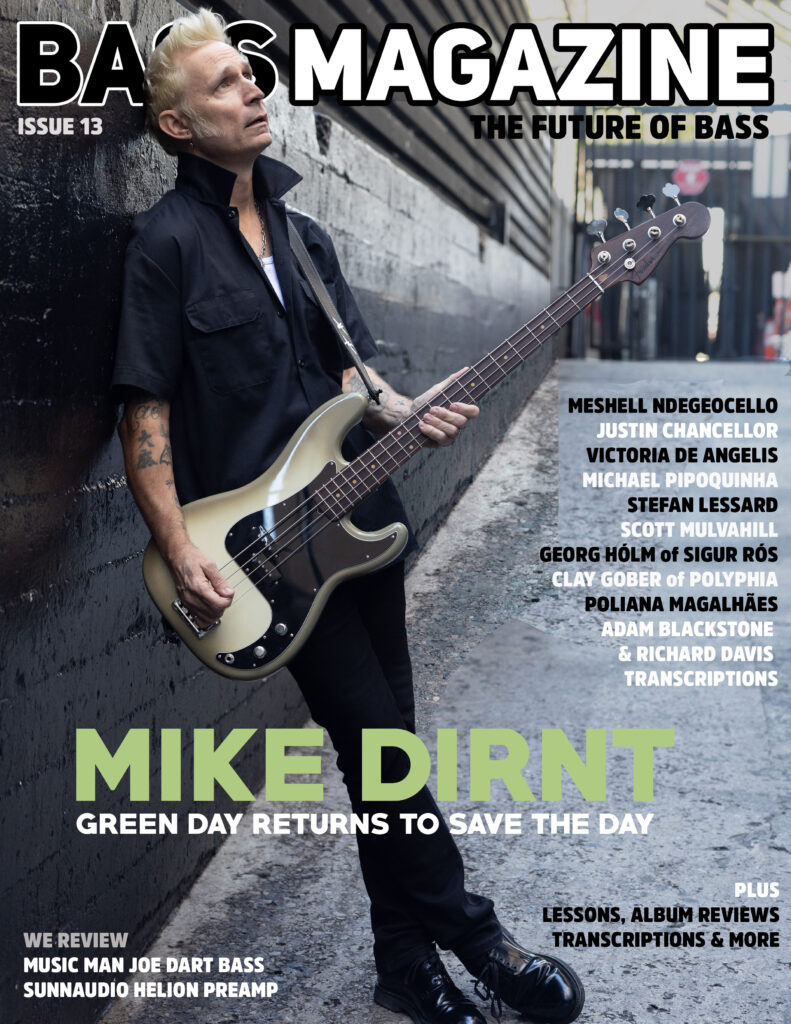
With superior sound quality, powerful filters, and essential features, the new Stanley Clarke Signature Acoustic Preamp by EBS is the perfect tool to deal with all the challenges that come with amplifying acoustic instruments.
The EBS Stanley Clarke Signature Acoustic Preamp is engineered and designed by EBS together with the legendary bass player and composer Stanley Clarke. It is built with premium components exclusively.

We spoke to Stanley to for insight into the pedal’s design and function.
How did this pedal come about?
The genesis of it was me having to play my acoustic bass onstage with young drummers who are so talented these days, but also so loud! I’ve been using the EBS Micro Bass II Preamp/DI to be able to hear myself better in those situations, and that led to a conversation with EBS about a preamp pedal for acoustic instruments. I go way back with those guys, to when they first started. They’re great people who make terrific-sounding, durable pedals, and they’ve always supported me. I got together with my engineer, Travis Rogers, we made some design and sound recommendations, and the Acoustic Preamp is the result. It’s easily my favorite pedal that I’ve ever used, and I think it’s an essential piece of gear for every acoustic bassist.
What are the challenges it addresses and how does it help?
An acoustic bass is essentially a big, resonant soundbox that when amplified is subject to get out of control and feedback when a kick drum or any other loud frequency vibrates through it. The Acoustic Preamp has bass, mid, and treble EQ controls, as well as a high pass/notch filter setting that shelves problematic frequencies by adjusting to the sound characteristics of your instrument and the venue you’re playing in. It allows the acoustic bassist to play with a drummer in virtually any setting, from a soft volume in a jazz club to loud rock in an arena.
How have you been using it?
What I love is the dual channels, which enables me to set up a channel for playing with a bow. Trying to cut through a band at a loud volume with a bow can be especially frustrating; it can get pretty screechy. The Acoustic Preamp allows me to cut the offending highs, add clarity, and dial in the rich lows that are natural to the insturument when bowed. And I use the onboard effects loop to add some echo to my bowed sound.
Are you using it in the studio?
All the time, through the pickups on my acoustic basses. It adds a component the mic part of the sound doesn’t have, and it makes the pickup signal sound better. Whether live or in the studio, it boosts what needs to be boosted and subtracts what needs to be subtracted, resulting in a clearer, warmer, rounder, louder tone.
Have you used it with your electric basses?
Yes and it sounds great. I’ve basically had the same Alembic sound since the early-’70s, that’s my voice. But the Acoustic Preamp warms it up and adds a different kind of EQ. It also sounds monsterous with acoustic bass guitars and semi-hollow electric basses. I highly recommend it as a versatile tool for all bass players.

“I have been using this new preamp on every show and in the studio since November 2019, when I got the final sample in my hands. It has become a mainstay to my upright bass sound. I think it is absolutely essential for every acoustic bass player to own one of these. The 2-channel preamp allows you to have a completely different setting for bowing and pizzicato at the push of a button. The effects loop, EQ, ¼”, and XLR input, and outputs make it extremely versatile for stage or studio. It even sounds great on the electric bass.” –Stanley Clarke
The analog 2-channel preamp uses a superior signal level quality that matches the performance of a professional-grade mixing console. The headroom and specific features make it ideal for handling the complex sonic characteristics of upright bass and other acoustic instruments.
Each channel feature a similar set of familiar EQ controls to adjust Bass, Mids, and Treble. They both also have a control to be used either as a HIGH PASS or NOTCH filter. A switch decides the function, while the control knob picks the frequency range. The notch and high pass filters are excellent tools to prevent unwanted feedback and adjust the sound to the characteristics of the room and instrument.

The two 1/4″ inputs are both 10 Mohms high impedance inputs to handle both passive, active, or piezo pickups. The A channel also provides support for Electret pickups when activating a dedicated switch. The B channel, on the other hand, allows you to use a Phantom powered or passive microphone as the source via an XLR microphone input.
Jump between the A and B channel, or mix the two depending on what you prefer. A Phase Inverter switch handles any possible phase issues that may appear when mixing two different sound sources.
Other features include an EFFECTS LOOP, a TUNER OUT, a BALANCED XLR-OUTPUT with Speaker Simulator, and Ground Lift to prevent hum. An Aux Input and Headphones output makes practicing and learning new songs easy.
The Stanley Clarke Acoustic Preamp is an excellent tool also for other acoustic instruments.
Key features:
- 2-channel preamp (A/B or A+B)
- Operates with Studio-grade signal quality
- 10 Mohm Impedance inputs (both channels)
- Individual High Pass/Notch Filter for each channel
- XLR microphone input with Phantom Power (channel B)
- Electret pickup support (channel A)
- Tuner output
- Effects Loop (serial/parallel)
- Balanced Output (with Speaker Simulator and Ground Lift)
- Aux Input and professional-grade headphones output.
- Power Supply included.
Price: 389 Euro / $499.99 . Available now.
FOR MORE DETAILS, VISIT WWW.EBSSWEDEN.COM

